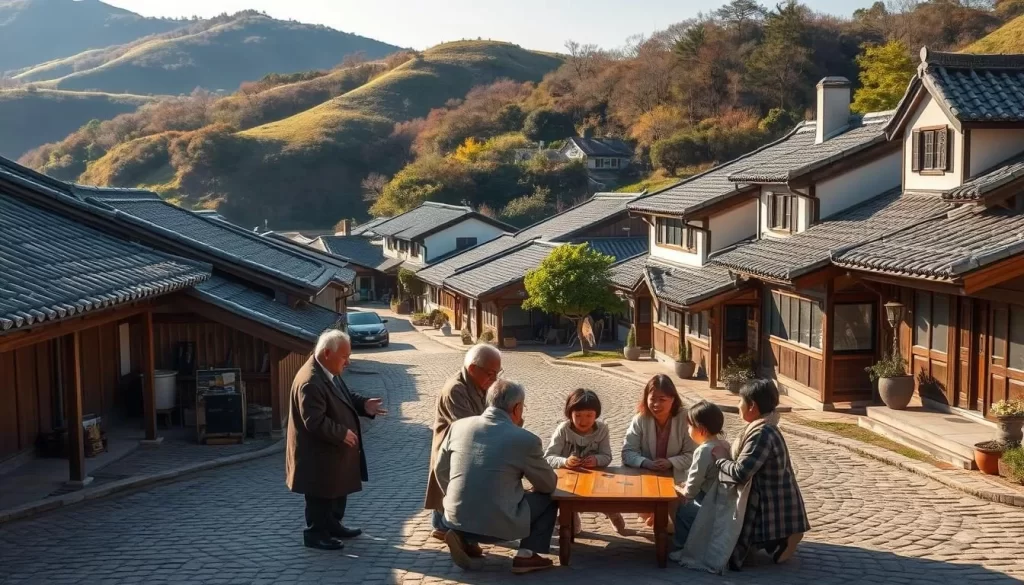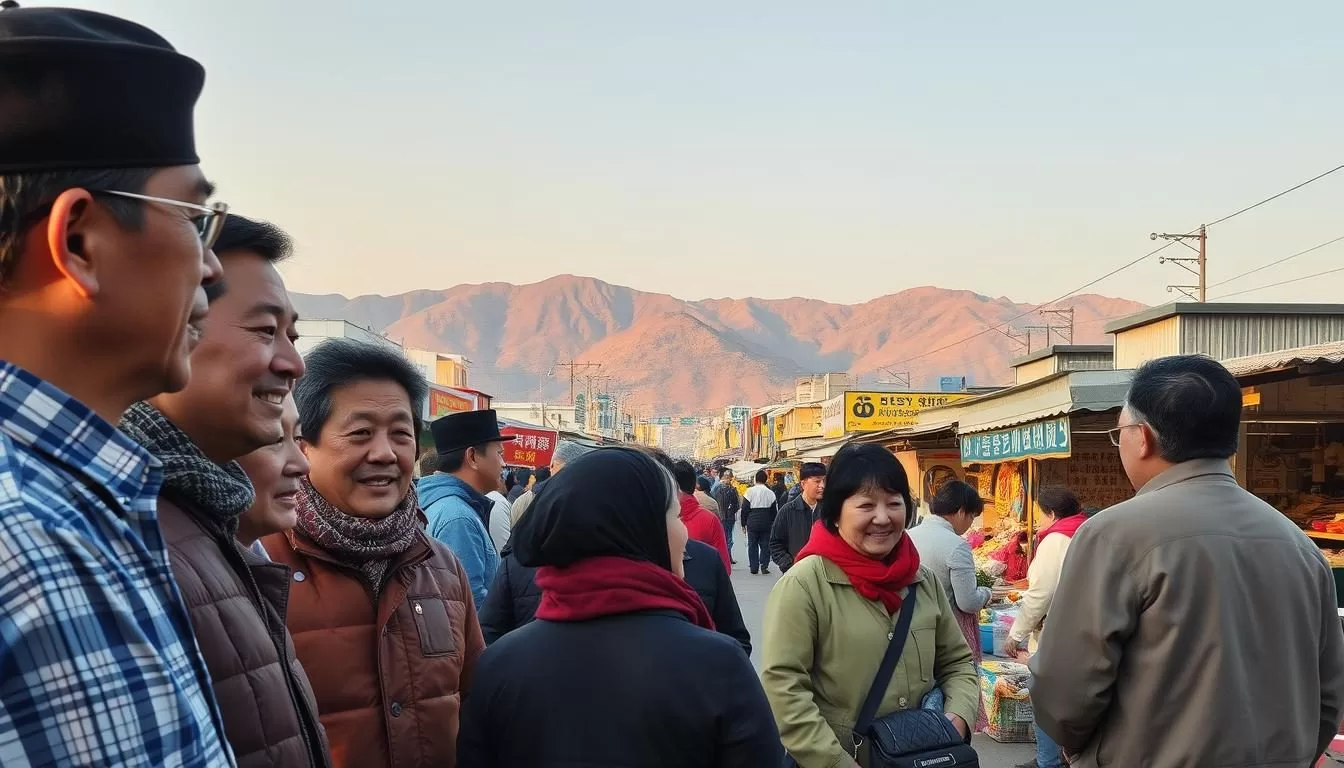You’re about to explore the rich cultural tapestry of North Jeolla Province, a region in South Korea known for its unique dialect and linguistic heritage. The Korean language, with its roots tracing back to the Stone Age, is a fascinating subject that reflects the history and culture of its people.
As you delve into the world of dialects and languages, you’ll gain a deeper understanding of how language serves as a cultural identifier in Korean society. The distinctive dialect of North Jeolla Province is a significant part of this identity, offering insights into the region’s history and cultural nuances.
By exploring the linguistic features of this region, you’ll enhance your appreciation of Korean culture as a whole. This introduction sets the stage for understanding the complex relationship between standard Korean and regional dialects, providing a foundation for further exploration.
The Korean Language Landscape in South Korea
Understanding the Korean language landscape is crucial for grasping the cultural nuances of South Korea. The Korean language is the backbone of this landscape, with various dialects spoken across different regions.
Standard Korean (Pyojuneo) as the Official Language
 South Korea. It’s based on the dialect of the Gyeonggi province, where the capital, Seoul, is located. Pyojuneo is used in education, media, and government, serving as a unifying force across the country. This standardization ensures that Koreans from different regions can communicate effectively, despite their regional dialects.
South Korea. It’s based on the dialect of the Gyeonggi province, where the capital, Seoul, is located. Pyojuneo is used in education, media, and government, serving as a unifying force across the country. This standardization ensures that Koreans from different regions can communicate effectively, despite their regional dialects.
The Six Major Dialects of South Korea
South Korea is home to six major dialects: Seoul/Gyeonggi, Gangwon, Chungcheong, Gyeongsang, Jeolla, and Jeju. Each dialect has its unique characteristics, contributing to the rich cultural heritage of South Korea. While these dialects are distinct, they remain mutually intelligible for the most part, allowing speakers of different dialects to understand each other. The Korean language, with its diverse dialects, plays a significant role in shaping the identity of its speakers.
North Jeolla Province: Geographic and Cultural Context
North Jeolla Province, located on the southwestern side of the Korean peninsula, boasts a rich history and distinct cultural identity. As part of the broader Honam region, it is known for its more liberal outlook and significant role in democratic movements throughout Korean history.

Location and Regional Significance
North Jeolla Province is situated in a geographically distinct area, characterized by fertile plains and coastal regions. This unique geography has influenced settlement patterns and cultural development, contributing to the evolution of the local dialect. As you explore this region, you’ll understand how its physical characteristics have shaped its identity.
- The province’s location on the southwestern side of the Korean peninsula has contributed to its unique cultural and linguistic traits.
- North Jeolla’s cultural significance is deeply rooted in its history and traditions, making it an integral part of the Honam region.
Historical Background of the Region
The history of North Jeolla Province is marked by its role in democratic movements and its reputation for having a more liberal outlook. The region’s historical relationship with neighboring provinces and kingdoms has contributed to its distinct cultural identity and dialect. Key historical events have shaped the linguistic evolution of the region, setting it apart from other areas.
- The region’s history has been influenced by its interactions with neighboring provinces and historical kingdoms.
- North Jeolla’s historical significance is reflected in its cultural heritage and linguistic characteristics.
The Jeolla Dialect (Jeolla-mal) in North Jeolla Province
As you explore North Jeolla Province, you’ll discover the Jeolla dialect, a fascinating aspect of the region’s cultural identity. The Jeolla dialect, or Jeolla-mal, is known for its melodic intonation and distinct rhythm, setting it apart from other regional dialects in Korea.

Origins and Development
The Jeolla dialect has its roots deeply embedded in the history of North Jeolla Province. Over centuries, it developed unique linguistic features due to the region’s historical isolation and cultural factors. Characteristics such as adding the filler word 잉 (ing) at the end of sentences and altering pronunciation with extra consonants like ㅅ (s) and ㅂ (b) have become hallmarks of this dialect.
Relationship to Standard Korean
The Jeolla dialect coexists with Standard Korean in North Jeolla Province, and speakers often navigate between these two language varieties depending on the context. While Standard Korean is used in formal settings and education, the Jeolla dialect is prevalent in informal conversations among locals. Understanding the relationship between Jeolla-mal and Standard Korean is crucial for appreciating the linguistic diversity of the region.
Prevalence and Usage in Modern Times
In modern times, the Jeolla dialect continues to be an essential part of the region’s identity. Despite the influence of standard Korean through media and education, the Jeolla dialect remains vibrant, especially among older generations. However, younger generations are also keeping the dialect alive by incorporating it into their daily lives, albeit with some modern adaptations. The prevalence of the Jeolla dialect in North Jeolla Province highlights the region’s strong cultural heritage and its ability to maintain traditional practices in a rapidly changing world.
Distinctive Features of the North Jeolla Dialect
The North Jeolla dialect boasts a unique set of features that make it instantly recognizable to native Korean speakers. One of the key aspects that distinguish it from other regional dialects is its distinct phonetic characteristics and intonation patterns.
Phonetic Characteristics and Pronunciation
The North Jeolla dialect is known for its unique pronunciation features, including the addition of filler words like “잉” (ing) at the end of sentences for emphasis or to soften the tone. For example, “맞아요” (majayo, that’s right) becomes “맞아요잉” (majayo-ing). Another characteristic is the addition of extra consonants like ㅅ (s) and ㅂ (b) into words, altering their pronunciation slightly. For instance, “저어라” (jeo-eo-ra, stir) becomes “젓어라” (jeot-eo-ra), giving the dialect its distinct sound and playful quality.
Unique Vocabulary and Expressions
The North Jeolla dialect also has unique vocabulary and expressions that are specific to the region. Some words may not exist in standard Korean or have different meanings. This distinct vocabulary is a significant part of what makes the dialect so unique and reflective of the local culture.
Grammar and Sentence Structure Variations
In addition to its phonetic and vocabulary differences, the North Jeolla dialect exhibits variations in grammar and sentence structure. This includes unique sentence endings and grammatical particles that differ from those used in standard Korean. These variations contribute to the dialect’s distinctive musical quality, setting it apart from other dialects like the Gyeongsang dialect.
Understanding these distinctive features can provide insights into the cultural values and historical experiences of North Jeolla residents. By exploring the North Jeolla dialect, you can gain a deeper appreciation for the region’s rich linguistic heritage.
Cultural Significance of the North Jeolla Dialect
As you explore the North Jeolla dialect, you’ll discover its role in shaping the identity and cultural practices of the region. The dialect is not just a means of communication; it’s a symbol of regional pride and a connection to the community’s heritage.
The Dialect as a Marker of Regional Identity
The North Jeolla dialect serves as a powerful marker of regional identity, creating a sense of belonging among its speakers. You will find that the dialect is used to express cultural pride and distinguish the region from other areas in South Korea. The emotional and social significance attached to the dialect is profound, connecting generations and preserving cultural heritage. The dialect’s unique expressions and lilting tones evoke warmth and hospitality, much like the region’s renowned cuisine.
Representation in Media and Arts
The North Jeolla dialect is represented in various forms of Korean media, including television dramas, films, and literature. These portrayals shape perceptions of the dialect and the region, influencing how they are viewed by the broader public. Notable artists and writers from North Jeolla have incorporated the dialect into their work, bringing it to wider audiences and fostering greater appreciation for the region’s cultural richness. The dialect’s presence in media also helps to create bonds within North Jeolla communities, both within the province and among those who have moved to other regions.

Language Education and Preservation Efforts
In North Jeolla Province, the balance between language education and dialect preservation is a pressing concern. The education system in South Korea has traditionally prioritized the Seoul dialect as the standard form taught in schools, often marginalizing regional dialects like North Jeolla’s.
Teaching Standard Korean vs. Regional Dialects
The tension between teaching standardized Korean for national communication and preserving local linguistic heritage is evident. While standard Korean is essential for national unity and communication, regional dialects like the North Jeolla dialect are vital to local identity and cultural diversity. Educational institutions are now exploring ways to incorporate regional dialects into their curricula.
| Dialect | Standard Korean | Regional Dialect |
|---|---|---|
| Usage | National communication | Local identity |
| Importance | Unity and official contexts | Cultural heritage |
Initiatives to Preserve the North Jeolla Dialect
Several initiatives are underway to document, preserve, and promote the North Jeolla dialect. Local communities, educational institutions, and government bodies are collaborating on dialect preservation efforts. Technology and digital media are being utilized as tools for dialect documentation and revitalization. For instance, language learning apps and online courses are being developed to teach the dialect.
These efforts aim to ensure that younger generations maintain a connection to their linguistic heritage. By promoting the use of the North Jeolla dialect in various contexts, the province is working to preserve its unique cultural identity.
North Jeolla Province, South Korea: Official and Widely Spoken Languages in Global Context
As you explore the linguistic landscape of North Jeolla Province, you’ll discover its unique place within the global context. The province’s linguistic identity is not isolated but is part of a broader global tapestry.
Interactions with Foreign Languages
The influence of foreign languages, particularly English, on the North Jeolla dialect is a significant aspect of its modern linguistic landscape. Loanwords and changing speech patterns are evident as the province interacts with international visitors and global cultures. You can observe how North Jeolla residents navigate multilingual environments, both when traveling abroad and when interacting with foreigners in their province.
- The incorporation of English and other foreign languages into daily communication.
- The adaptation of loanwords into the local dialect.
- Changes in speech patterns due to global cultural influences.
Language Tourism and Cultural Exchange
North Jeolla Province is becoming a destination for language tourism, where visitors come to experience the authentic regional culture and dialect. Cultural exchange programs play a crucial role in promoting the understanding of North Jeolla’s unique linguistic heritage to international audiences. You can gain insights into how these programs foster deeper appreciation and understanding of the local dialect among foreign visitors and language learners.
Conclusion
As you explore the linguistic landscape of North Jeolla Province, you’ll discover a rich tapestry of language and culture. The province’s official language status and regional dialect are integral to its identity.
The North Jeolla dialect has distinctive features that reflect the province’s unique history, geography, and cultural identity. Understanding this dialect is crucial for a deeper appreciation of South Korean cultural diversity.
Preserving the Korean language and its dialects is essential, as they serve as vital carriers of cultural heritage. At the same time, acknowledging the practical value of standardized language is important.
The ongoing evolution of the North Jeolla dialect in response to modern influences highlights the dynamic nature of language. Exploring dialects like North Jeolla’s can lead to a greater understanding and appreciation of regional linguistic diversity.
In conclusion, the significance of North Jeolla Province’s linguistic landscape lies in its contribution to the rich cultural tapestry of South Korea. By embracing and preserving this heritage, we can foster a more nuanced understanding of the region’s identity.






